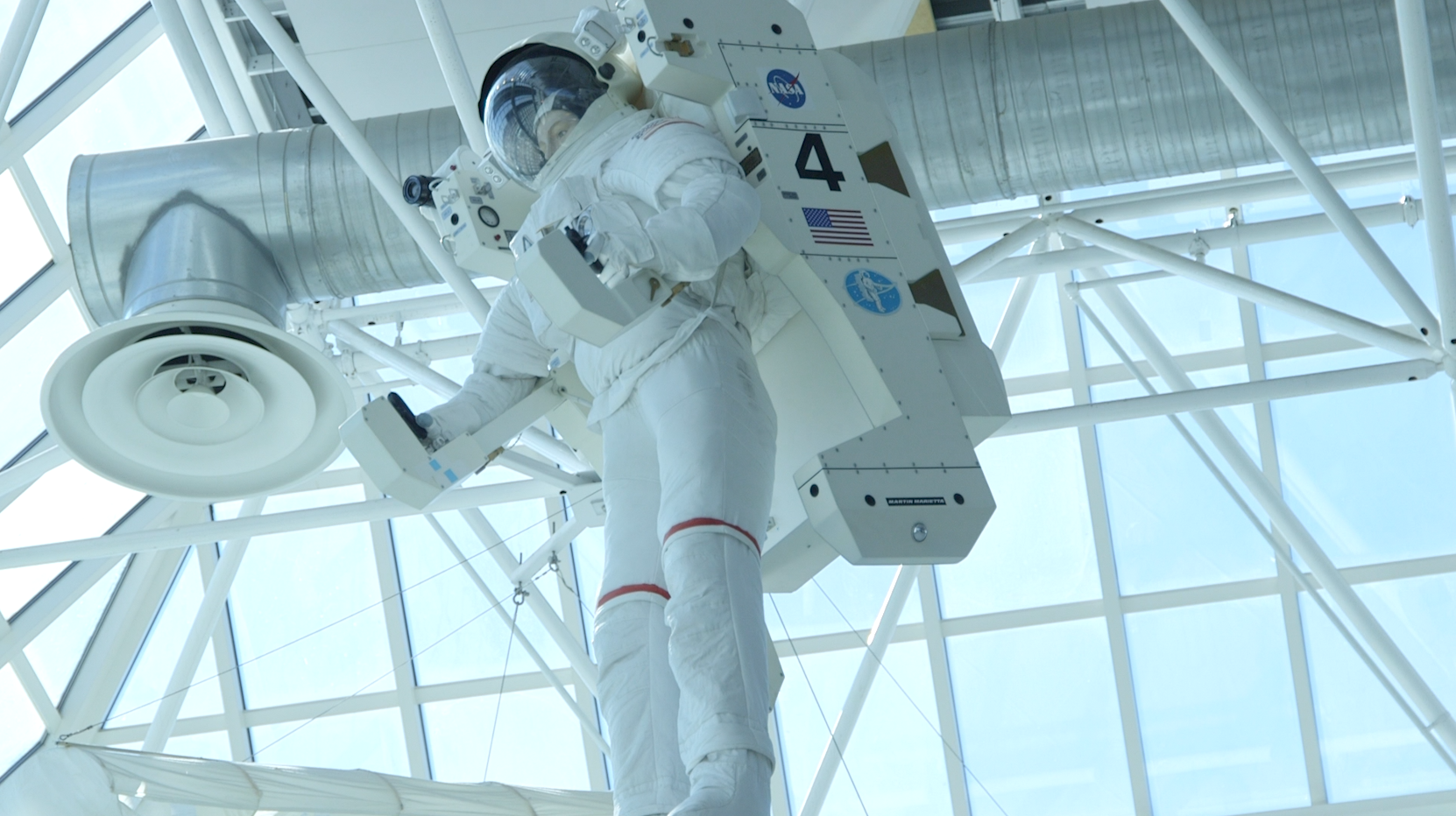Exploring Apollo 13 at the Cradle of Aviation museum in New York
"This is what all the astronauts trained on for every lunar landing."
GARDEN CITY, N.Y. — Incredible moments from Apollo 13 live on in a hidden gem museum in New York.
Space.com recently visited the Cradle of Aviation Museum on Long Island, New York, where exhibits highlight moments in aviation history ranging from the peak of the Pan Am airline to NASA's Apollo program. There, we spoke to curator Joshua Stoff who took us through some of the most incredible pieces saved from Apollo, specifically the Apollo 13 mission.
First, Stoff showed us a lunar module simulator in which Apollo astronauts once trained to fly down to the lunar surface. "It's basically the inside of the ascent stage, and this was at Cape Kennedy, and this is what all the astronauts trained on for every lunar landing," Stoff said. "It's opened up like a clamshell, it would've been closed up with projectors and cameras and screens behind the windows so when they worked the controls it would simulate coming down and landing on the moon."
Video: Space Traveler: Apollo missions at the Cradle of Aviation Museum
Related: Apollo 13 in Real Time website offers new insight into mission

Now, while the Apollo 13 astronauts did train in this piece of equipment, they never used it to land on the moon and instead crammed inside of the actual lunar module to use it as a "life raft" around the moon.
Inside the simulator, you can even see the lithium hydroxide canisters which filter carbon dioxide out of the air in the lunar module. During the troubled Apollo 13 mission, the crew had to grab extra canisters out of the command module — the "mothership" that stays in lunar orbit while the lunar module goes to the surface — and alter them with duct tape and plastic bags to make them fit in the lunar module so they could keep breathing the air.
The Apollo 13 crew had to get creative in the lunar module because the three astronauts were using the craft, which was built for only two astronauts, as a "life raft." After the oxygen tank explosion which forever changed the course of the mission, the crew shut the power down on the command module and all squeezed into the lunar module. But, with one extra person breathing the air carbon dioxide levels started to rise. So, since the extra canisters from the command module didn't fit, to create a functioning air filtration system they had to get creative and alter them to fit the lunar module.
Get the Space.com Newsletter
Breaking space news, the latest updates on rocket launches, skywatching events and more!
The museum also features a number of other pieces of Apollo history. There is a parachute that traveled to the moon and back with Apollo 17 and lunar module 13, which was built for the Apollo 19 mission but never made it to the moon. Apollo 19 was supposed to launch to the moon in 1973, but it never flew after NASA canceled the Apollo program. Lunar module 13 is one of only three original lunar modules still on our planet.
There is even a mockup of an old Northrop Grumman cleanroom in the museum, which holds lunar module test article 1, or LTA1, the first lunar module ever built. "It never had the outer skin put on it or the legs," Stoff said, adding that "this is where they worked out all their techniques for building the spacecraft and ran all pressure tests, electrical tests. So it's basically a real lunar module without the skin on it, which is really cool because people can see the inside."
The cleanroom additionally pays homage to some of the researchers and workers who helped to bring these spacecraft to fruition, some of whom currently volunteer at the museum, teaching the public about the time working at NASA on these historic technologies.
While you can't check out the museum's incredible collection of historic spaceflight items in person right now because of travel restrictions imposed to slow the spread of the novel coronavirus, the museum has a free virtual tour which you can take online here.
So virtually take yourself, your friends and your family to the museum and explore the history of human space exploration.
- Apollo 13 50th anniversary exhibit to launch new space rental service
- Failure was not an option: NASA's Apollo 13 mission of survival in pictures
- Watch NASA's 'Home Safe' documentary and more
Follow Chelsea Gohd on Twitter @chelsea_gohd. Follow us on Twitter @Spacedotcom and on Facebook.
OFFER: Save 45% on 'All About Space' 'How it Works' and 'All About History'!
For a limited time, you can take out a digital subscription to any of our best-selling science magazines for just $2.38 per month, or 45% off the standard price for the first three months.
Join our Space Forums to keep talking space on the latest missions, night sky and more! And if you have a news tip, correction or comment, let us know at: community@space.com.

Chelsea “Foxanne” Gohd joined Space.com in 2018 and is now a Senior Writer, writing about everything from climate change to planetary science and human spaceflight in both articles and on-camera in videos. With a degree in Public Health and biological sciences, Chelsea has written and worked for institutions including the American Museum of Natural History, Scientific American, Discover Magazine Blog, Astronomy Magazine and Live Science. When not writing, editing or filming something space-y, Chelsea "Foxanne" Gohd is writing music and performing as Foxanne, even launching a song to space in 2021 with Inspiration4. You can follow her on Twitter @chelsea_gohd and @foxannemusic.










